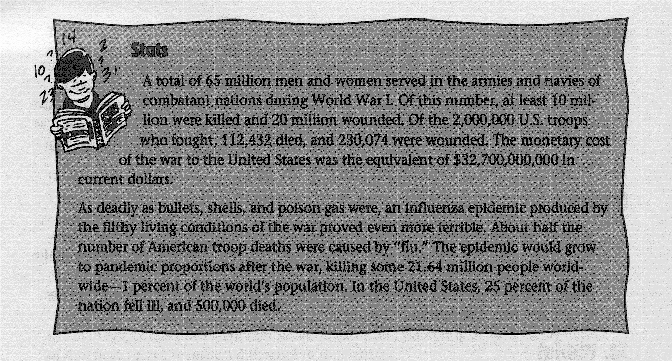

OVER THE TOP
Between June 6 and July 1,1918, the "Yanks" recaptured for
the Allies Vaux, Bouresches, and-after a particularly bitter battle-Belleau
Wood. The Americans also managed to hold the critically important Allied
position at Cantigny against a great German offensive during June 9-15. If ever
the cliche about a "baptism by fire" was appropriate, it was now. American
troops quickly came to know what the soldiers of Europe had experienced for the
past four years: the results of humanity gone mad.
Marne
Between July 18 and August 6, 85,000 American troops broke the seemingly endless
stalemate of the long war by decisively defeating the German's last major offensive
at the Second Battle of the Marne. Here, at last, was a battle that could be
deemed a genuine turning point. The victory was followed by Allied offensives-at
the Somme, Oise-Aisne, and Ypres-Lys during August.
St. Mihiel
Although Americans fought in each of the major August offensives, they acted
independently-and brilliantly-against the St. Mihiel salient during September
12-16. This battle initiated a campaign involving a massive - number of U.S.
troops-some 1.2 million of them-
who pounded then cut German supply lines between the Meuse River and the Argonne
Forest. The campaign, which continued until the very day of armistice, November
11, 1918, was highly successful, but terribly costly. American units suffered,
on average, a casualty rate of 10 percent.
Armistice
It became apparent to Germany that American soldiers were not only willing and
able to fight (a matter of doubt among optimistic German strategists the year
before), but that their numbers were inexhaustible, as was the American capacity
for military-industrial production. The German government agreed to an
armistice-a cessation of hostilities- to be concluded at the 11th hour of the
11th day of the 11th month of 1918.

